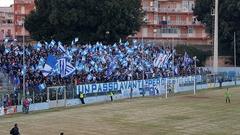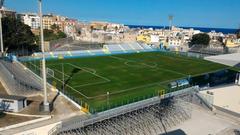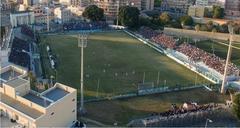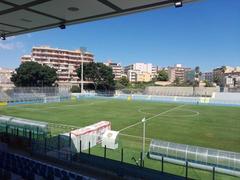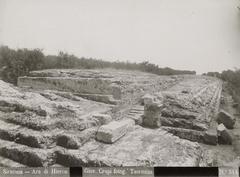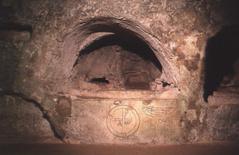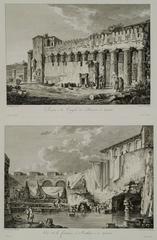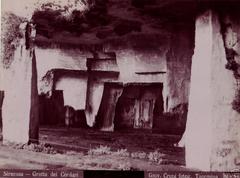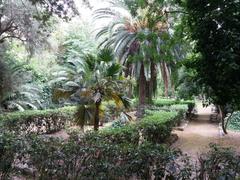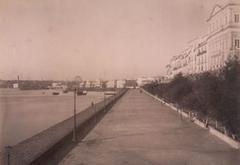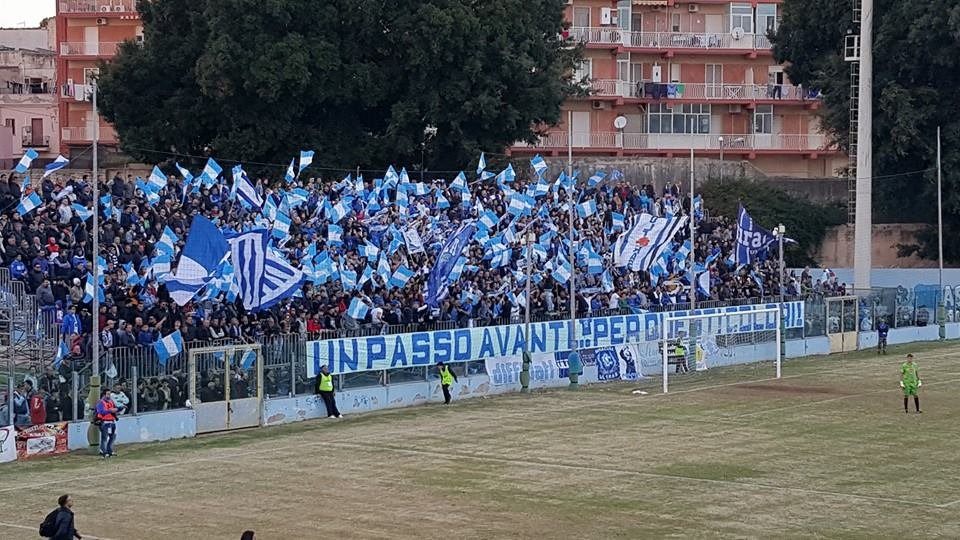
Stadio Nicola De Simone: Visiting Hours, Tickets, and Syracuse Historical Sites Guide
Date: 15/06/2025
Introduction
Nestled in Syracuse’s historic Santa Lucia district, Stadio Nicola De Simone is far more than a football ground—it is a living monument to the city’s sporting legacy, community spirit, and evolving urban identity. Since its inauguration in 1932, the stadium has reflected the cultural heartbeat of Syracuse, witnessing key historical events, memorials, and vibrant football matches that unite generations of locals and visitors alike (typicalsicily.it; siracusa.italiani.it).
This guide provides a comprehensive overview of visiting the stadium, including essential details on opening hours, ticketing, accessibility, travel tips, and nearby attractions. Whether you’re a football fan eager to experience the electric matchday atmosphere or a traveler exploring Syracuse’s rich tapestry of history and culture, Stadio Nicola De Simone offers an authentic gateway into the soul of this Sicilian city.
Table of Contents
- Historical Overview
- Stadium Architecture and Modernization
- Visiting Information
- Matchday Experience
- Cultural Significance & Memorials
- Nearby Historical Sites
- Practical Tips for Visitors
- Frequently Asked Questions (FAQ)
- Conclusion & Further Resources
- References
Historical Overview
Origins and Name Changes
Originally inaugurated in 1932 as Stadio del Littorio, reflecting the Fascist symbols and politics of the era, the stadium’s architecture and identity have evolved in tandem with Italy’s turbulent history. Following the fall of Fascism, it became Stadio Vittorio Emanuele III, before receiving its current name in 1979 as a tribute to Nicola De Simone, a beloved Siracusa Calcio player who died after an on-field accident. This renaming, along with subsequent dedications to other local figures, firmly rooted the stadium in the collective memory and civic pride of Syracuse (fr.wikipedia.org).
Evolution and Community Role
Throughout its history, Stadio Nicola De Simone has been more than a sports venue: it has served as a hub for major events, cultural gatherings, and community rituals. Home to Siracusa Calcio, it has hosted a range of teams and seen fluctuating fortunes, including stints in Serie B and C (clubnicoladesimone.blogspot.com). The stadium’s presence in the heart of the Borgata district has strengthened its bond with the local community, becoming a symbol of resilience, unity, and urban memory.
Stadium Architecture and Modernization
Structural Features
Stadio Nicola De Simone features a blend of preserved 1930s architecture and modern upgrades. The main entrance still bears traces of its original design, while renovations have brought the facility up to contemporary standards. The stadium currently seats 5,946 spectators across the central grandstand, Curva Ovest (“Curva Anna” for home fans), and other sections (Europlan).
Recent Renovations
Significant investments in recent years have included:
- Installation of FIFA-homologated synthetic turf and upgraded floodlighting systems (siracusaoggi.it)
- Refurbishment of locker rooms, seating, and security measures
- Improved accessibility features such as ramps, reserved seating, and accessible restrooms (siracusapress.it)
These upgrades ensure the stadium remains both a comfortable and safe environment for all visitors, while retaining its historical charm.
Visiting Information
Hours & Tours
- Opening Hours: Typically open on match days and for special events. For non-match day visits or tours, check with the official Siracusa Calcio website or contact the stadium administration in advance to confirm availability.
- Guided Tours: Offered occasionally and must be booked ahead. Tours include insights into the stadium’s history, architecture, and community legacy.
Tickets & Entry
- Where to Buy: Online via the Siracusa Calcio website, at authorized city outlets, or at the stadium box office on match days.
- Pricing: Serie D matches typically range from €10 (general admission) to €25 (premium seating), with concessions for children, seniors, and groups.
- Entry Procedures: Bring valid photo ID; tickets may be personalized. Standard security checks are conducted at entry (Stadio Regulations).
Accessibility
- For Disabled Visitors: Dedicated entrances, wheelchair seating, and accessible restrooms are available. Visitors needing assistance should notify stadium staff in advance.
Getting There & Parking
- Address: Via Nicola De Simone, 96100 Siracusa SR, Italy.
- Public Transport: Urban buses (lines 11 and 21) connect the stadium to the main train station and Ortigia (Interbus). Timetables may vary—check in advance.
- Parking: Paid lots such as Parcheggio Von Platen and Parcheggio Molo S. Antonio are nearby, but spaces fill quickly on match days. Early arrival is advised (Siracusa Turismo).
Facilities & Amenities
- Seating: Combination of covered (Tribuna Centrale) and open-air stands.
- Food & Beverage: Kiosks and mobile vendors offer Sicilian snacks and drinks on match days. Nearby trattorias serve traditional cuisine (Tripadvisor Syracuse Restaurants).
- Restrooms & Other Services: Clean, well-maintained facilities. First aid and lost-and-found services operate during major events.
Matchday Experience
The stadium comes alive on match days, with the Curva Anna known for its passionate supporters, colorful displays, and coordinated chants. Wearing Siracusa’s team colors (blue) is encouraged to blend in. Personal photography is permitted for non-commercial use; professional equipment requires prior permission. The official team shop sells merchandise ranging from keychains to replica jerseys (Siracusa Calcio Shop).
Security staff ensure a safe environment for all attendees. Families seeking a quieter experience should opt for the central grandstand.
Cultural Significance & Memorials
Stadio Nicola De Simone is infused with emotional resonance, not just through its dedication to Nicola De Simone, but also through sections named for other local figures, such as Corrado Siringo (central stand), Pippo Imbesi (gradinata), and Paolo Quattropani (synthetic training pitch). The “Curva Anna” is dedicated to the mother of a prominent supporter, reflecting the stadium’s deep ties to community memory (siracusa.italiani.it).
Historic twinning between Siracusa and Juve Stabia fans, forged in the wake of De Simone’s death, highlights football’s role in building bridges between communities.
Nearby Historical Sites
Enhance your visit by exploring Syracuse’s celebrated attractions:
- Basilica di Santa Lucia al Sepolcro: Just steps from the stadium, this church marks the martyrdom site of Saint Lucy.
- Archaeological Park of Neapolis: Home to the Greek Theatre and Roman Amphitheatre, a 20-minute walk away.
- Ortigia Island: The city’s ancient heart, rich in history, architecture, and Sicilian culture (Visit Sicily).
- Museo Archeologico Regionale Paolo Orsi: One of Europe’s foremost archaeological museums, nearby (Trek Zone).
Practical Tips for Visitors
- Language: Italian is predominant; basic English is spoken at ticket counters.
- Weather: Mediterranean climate—bring sun protection for day matches and a jacket for evenings (Meteo Siracusa).
- Payment: Credit/debit cards widely accepted; some vendors prefer cash. ATMs are close by.
- Family & Groups: Family tickets, group rates, and stroller storage available.
- Health & Safety: COVID-19 protocols are largely lifted, but hand sanitizers remain. Emergency procedures and first aid are in place (Ministero della Salute).
Frequently Asked Questions (FAQ)
Q: What are the stadium’s visiting hours?
A: Gates open 90 minutes before kickoff on match days; tours require advance booking.
Q: How can I buy tickets?
A: Online via Siracusa Calcio, city ticket offices, or the stadium box office.
Q: Is the stadium accessible for disabled visitors?
A: Yes—wheelchair seating, ramps, and accessible restrooms are provided.
Q: Are guided tours available?
A: Occasionally, by advance request via the club’s contact page.
Q: Where can I park?
A: Paid lots and limited street parking nearby; early arrival recommended.
Q: What else can I see near the stadium?
A: The Basilica di Santa Lucia, Archaeological Park of Neapolis, Ortigia Island, and more.
Conclusion & Further Resources
Stadio Nicola De Simone is not only a sporting venue but a vibrant cultural landmark, connecting past and present Syracuse. Whether attending a Siracusa Calcio match or exploring the city’s historical treasures, your visit promises an immersive experience in local tradition, passion, and hospitality.
For the latest schedules, ticketing, and exclusive features, download the Audiala app, follow Siracusa Calcio on social channels, and consult official tourism websites for up-to-date visitor information.
References
- Stadio Nicola De Simone: Typical Sicily
- Lo Stadio di Siracusa: Siracusa Italiani
- Stadio Nicola De Simone: Wikipedia
- Stadio Nicola De Simone: Europlan
- Stadio Nicola De Simone: Siracusa Calcio
- Stadio Nicola De Simone: Siracusa Oggi
- Siracusa Press - Stadio Improvements
- Tripadvisor Syracuse Restaurants
- Visit Sicily
- Meteo Siracusa
- Ministero della Salute
- Interbus
- Siracusa Turismo
- Trek Zone
- Audiala
